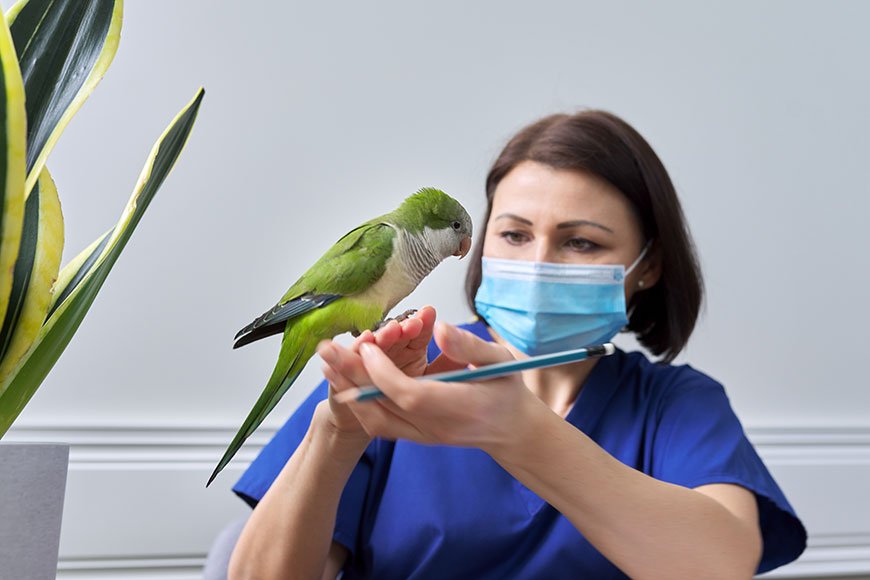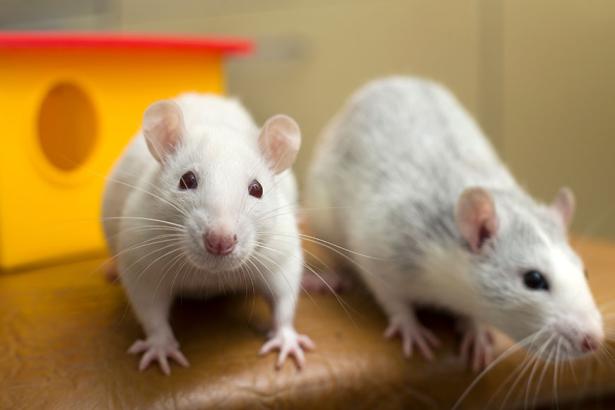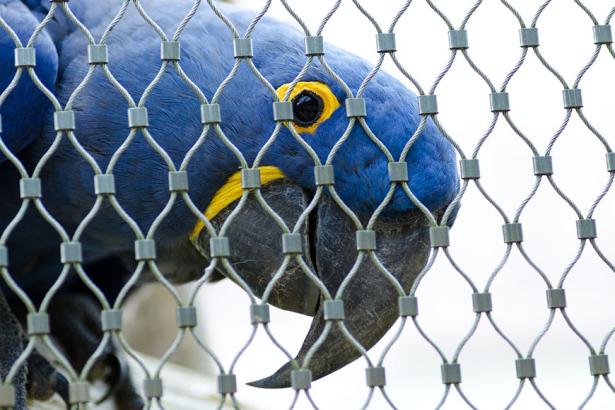Psittacine Beak and Feather Disease Syndrome (PBFDS) is highly contagious and infects all parrot species. It is caused by a Psittacine Circovirus. It is spread from bird to bird through feather dust and droppings. Parents can pass it on to chicks during feeding. Owners can also inadvertently pass it on from bird to bird by carrying the virus on their skin and clothing.
The clinical signs of the disease differ according to the species and age of the infected birds. The acute form of the disease can affect fledglings that have no defence against the disease. These young birds exhibit symptoms of vomiting and regurgitation and die within days. However, the more common form is a chronic disease resulting in feather and beak discolouration and deformities. Juvenile lorikeets exhibit signs of the disease by loss of flight and tail feathers. Feather colour changes are another indication of the disease in some birds – green feathers become yellow; blue feathers become white. Other birds can look “untidy” or “dishevelled”. The disease is most noticeable in Cockatoo species. It commonly affects young Sulphur Crested Cockatoos in their first year. These birds lose their powder down feathers and look grubby and dirty. As a result of the loss of powder down, their beaks and feet look shiny They lose their wing, tail and crest feathers. Newly growing feathers develop abnormally; the base of the blood feather becomes constricted and drops out before it has completed its growth. Cockatoos also exhibit beak changes. The upper and lower beaks overgrow and become very fragile.
The virus weakens the immune system of infected birds. Like an AIDS’ patient they become susceptible to secondary infections such as other viruses, bacteria or fungi. The life span of a bird infected with the chronic form of the disease can vary from 6 months to 15 or 20 years. If they don’t succumb to the original circovirus infection, they will often die as a result of secondary infections.
There is no specific treatment for the Beak and Feather Disease. Secondary infections can be treated and a non-stressful environment combined with a balanced diet may help during the course of the disease. Birds with no antibodies to the virus are unlikely to recover and in these birds Beak and Feather Disease is usually fatal. Birds that do produce an antibody response may recover or simply become carriers of the disease. Because of the danger of contagion to other birds, most avian veterinarians will recommend euthanasia for birds suffering from the chronic or acute form of the disease.
Various forms of testing are available to detect the disease. A simple DNA test can indicate whether a bird tests positive or negative for the disease. However this test gives no indication of the bird’s immune system. Another test, that is more expensive, looks for the antibodies that a bird produces to fight the disease. This gives a more detailed picture of the bird’s disease status.
Pet owners and aviculturalists need to be aware of the danger of this disease. It is important to be vigilant about quarantining and testing new birds to the aviary or household. Once a house or aviary is infected, it is almost impossible to get rid of the virus which can remain in the environment for years.
© Peter Wilson July 2010
Information supplied by (c) Currumbin Valley Vet Services August 2010
FAQs
The first signs of PBFD are usually seen in young birds, as they start to lose their feathers. The beak may also start to show signs of deformity, such as cracks or ulcers. As the disease progresses, the bird’s plumage will continue to deteriorate and the beak will become increasingly deformed. Early diagnosis and treatment of PBFD is critical to the health of affected birds, so if you suspect your bird may have PBFD do a search for exotic vets in my area to find an experienced veterinarian who can treat your bird before it’s too late.
A veterinarian will usually suspect PBFD if a bird shows clinical signs and symptoms such as feather loss or beak abnormalities. A definitive diagnosis can be made by taking a sample of the bird’s blood and testing it for either the presence of the virus or for antibodies to the virus.






Sulfur crested cockatoo loosing feathers on head
Would calcium powder be of any help for Cocatoos with the pbfd virus ?
I am trying to find the meaning about the disease called “going light” in lorikeets and how it occurs